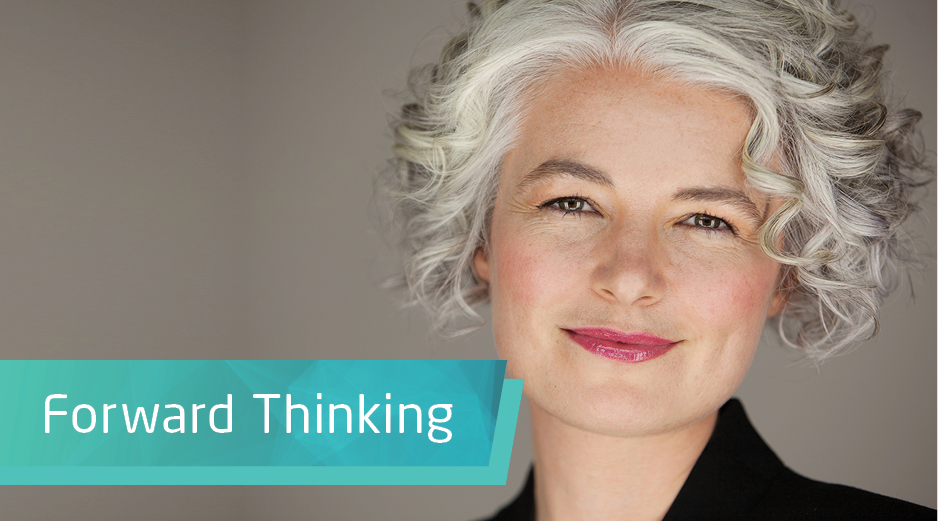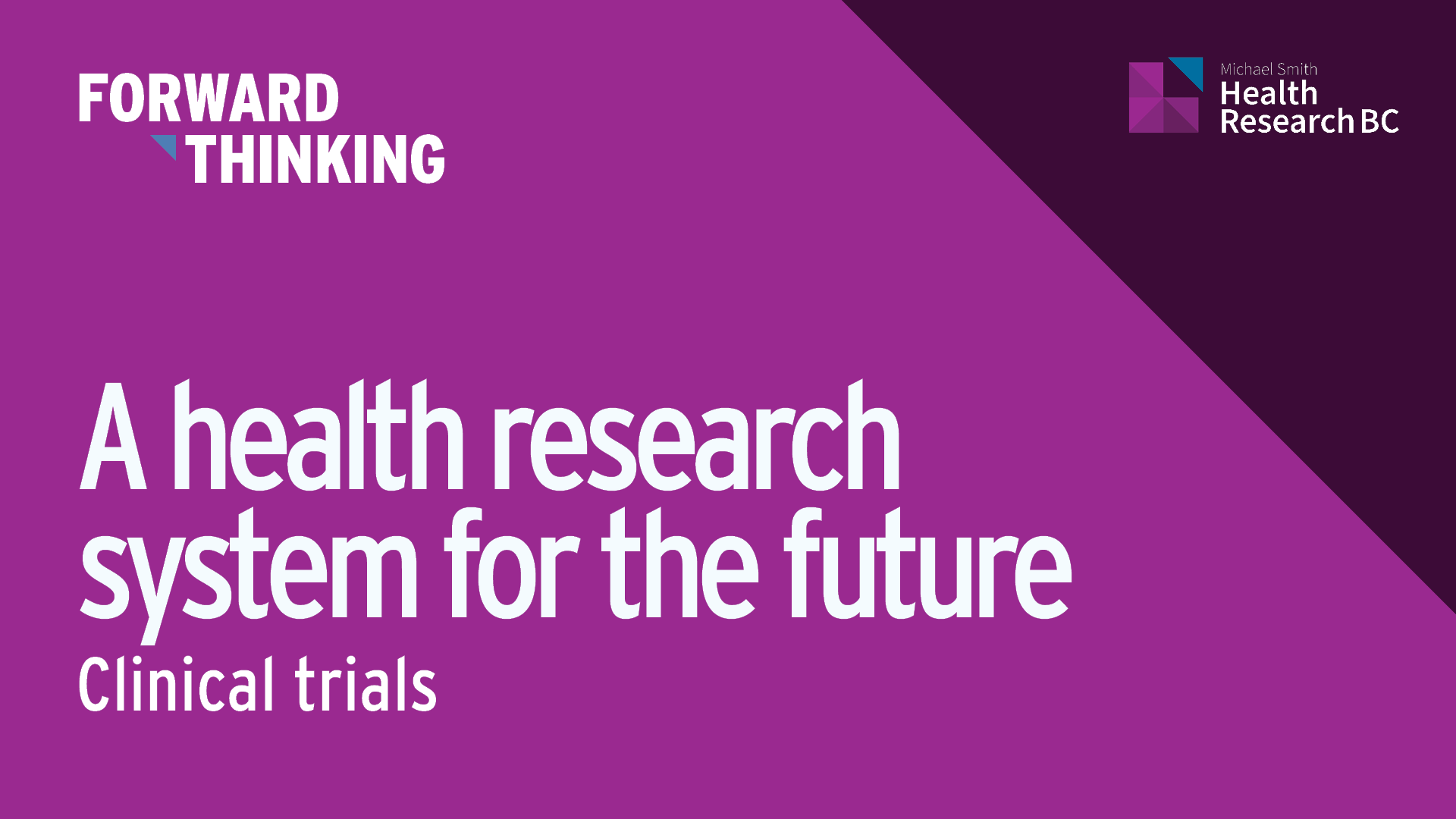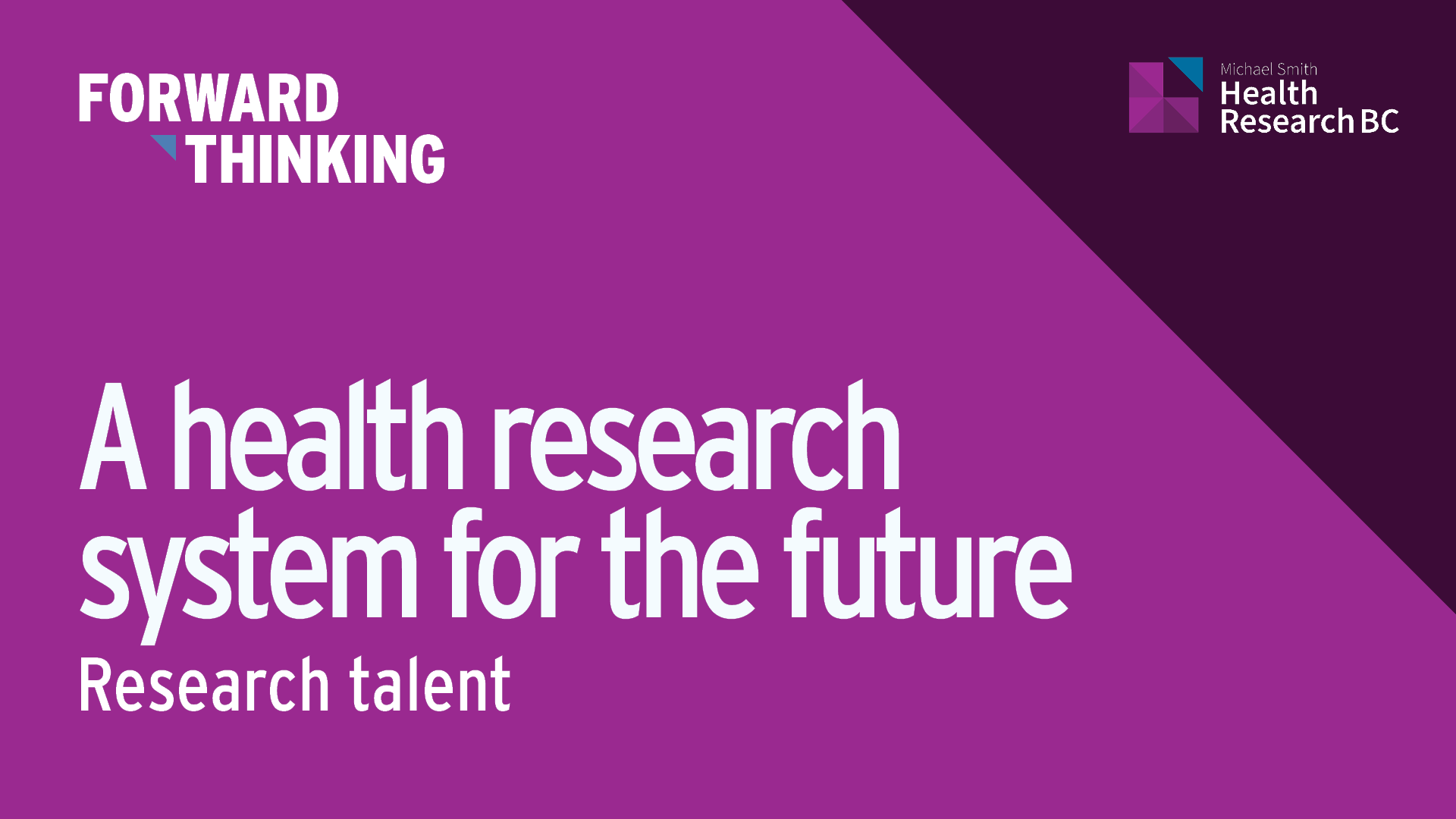Forward Thinking: Gender equity in health research funding
23 May 2018

As BC’s health research funding agency, with a focus on talent development, we think deeply about how to best support BC health researchers and balance important considerations like equity and diversity. Although these issues are not ones the Foundation can solve singlehandedly, we are considering our role – and our responsibilities – as a funder in fostering equity in health research.
Dr. Zena Sharman outlines what we know about gender equity in health research funding, what we wish we knew, and the steps MSFHR is taking to foster gender equity in our programs.
Forward Thinking is MSFHR’s blog, focusing on what it takes to be a responsive and responsible research funder.
Gender equity in health research funding: What do we know, what do we wish we knew, and where do we go from here?
At MSFHR we pride ourselves on being a data-driven organization that supports research that meets the highest scientific standards using our rigorous peer review process. To support this, we track all our competitions closely, systematically collecting and analyzing information about each program. But sometimes, our data surprise us.
This happened in the summer of 2017 when we announced our first Innovation to Commercialization (I2C) award recipients. We were proud to fund 11 excellent researchers working on products and technologies ranging from a liquid skin substitute for wound healing to an organ preservation solution for transplant services. These 11 excellent researchers also all happened to be men.
Although we know women in research (and many other industries) face systematic disadvantages, this result stood out to us for a couple of reasons. First, it’s something of an outlier. Historically, MSFHR has funded both women and men in all our competitions, with comparable success rates. However, there are some interesting trends when you dig into the data (more on that below). Second, our core focus is to develop health research talent by supporting excellent researchers, and we know that how funders and peer reviewers define and reward excellence isn’t gender-neutral. As a health research funder the 2017 I2C result raised the question: what’s our role in fostering gender equity?
On a personal note, I’m a passionate advocate for gender equity, and equity more broadly, and believe in the transformative power of health research. As a funder, equity is a topic we’ve often discussed, and I’m excited to look deeper as we begin to develop the Foundation’s first equity strategy. This direction is consistent with wider trends in research funding – for example, the Canadian Institutes of Health Research (CIHR) now has an equity strategy, there’s an Equity, Diversity and Inclusion Action Plan for the Canada Research Chair program, and diversity and inclusion is a key priority for UK funder The Wellcome Trust. In this blog post, I share some of what we’ve learned so far about gender equity in our competitions and where we intend to go from here.[1]
What we know about gender equity in health research funding
Women and men both have the potential to be excellent researchers, yet research shows that women face systematic disadvantages in research funding competitions, publishing, hiring and promotion. A recent review has shown that women applying for CIHR Foundation grants are less successful when assessed as principal investigators (vs. assessing their science). We also know from Tamblyn and colleagues, that women applying for funding receive lower scores than men, are more likely to apply with multiple co-investigators, ask for less funding and have their application triaged (scored too low to be discussed at the review meeting).
These gender disparities are compounded for racialized and Indigenous women[2], and although I’m not aware of research about how transgender women or gender-diverse researchers fare in funding competitions or academia, my educated guess is that they too face systemic barriers to success.
What we know about gender equity in MSFHR’s funding programs
When we look at trends in our data for MSFHR’s flagship programs – the Scholar award (which funds early career researchers) and Research Trainee award – the success rates for women and men are not dissimilar. However, it’s important to consider these data in the context of the absolute number of Scholars and Research Trainees we’ve funded since 2001.[3]
MSFHR-funded Scholars and Research Trainees from 2001-2017
| Program | Female applicants | Male applicants | ||
| Success rate* | Total funded | Success rate* | Total funded | |
| Scholar (early career researchers) | 30% | 153 | 34% | 255 |
| Research Trainee | 27% | 735 | 26% | 581 |
* Percentage of applications funded
Amongst our funded researchers, approximately 38% of Scholars and 56% of Research Trainees are women, proportionate to the number of female applicants. In short, we receive applications from, and subsequently fund, more women as post-docs and more men as early career researchers.
This is likely due to a range of complex and interconnected factors, and a reflection of research showing that the higher you climb in the academic ranks, the lower the percentage of women in comparison to men. This holds true locally: UBC found that, among its PhD graduates, women are less likely to have research-intensive faculty positions and are more likely to have term positions and other careers within academia.
At MSFHR, we also have a host of other programs, including a Health Professional-Investigator award that supports practicing clinicians to develop their research careers, the above-mentioned I2C award, and a suite of KT-focused awards. These programs all launched over the past two years, and we’re monitoring them closely.
Although it’s too early to identify trends over time, our 2017 competitions provided some interesting numbers:
- Across all programs, just under half of 2017 applicants were female. Women had a success rate of 34% and men had a success rate of 26%.
- In our personnel programs (Scholar, Research Trainee and Health Professional-Investigator) just under half of applicants were female, with similar success rates by gender.
- Our KT-focused awards (C2 and Reach) attracted more female researchers; only 1/7 applicants were male.
- The I2C program attracted more male researchers; only 1/5 applicants were female.
Paying attention to these trends is one way we’re taking action on gender equity, because we need to understand the baseline in order to inform our next steps. But there’s still a lot we don’t know!
What we wish we knew about gender equity in health research funding
Across Canada’s research landscape we lack data on gender (including gender diversity), race, ethnicity, Indigeneity and disability, and the qualitative data needed to better understand the gendered dynamics at work in people’s research careers. As highlighted in the 2017 Fundamental Science Review and a 2012 report on gender in Canadian research capacity, this lack of diversity data is a major challenge across our sector. But this is starting to change. Excitingly, CIHR have just recently launched a new Equity and Diversity Questionnaire for applicants and we’ll be paying close attention to how that works in practice.
There is also only limited research on how to prevent or reduce gender bias in peer review of grants. As a health research community we not only need more diversity data, but also more research on strategies to mitigate gender bias in research funding, including in the design of funding programs, policies and peer review processes. Together, these data will help us understand the challenges women and other groups face both before and during the funding application review process, and inform collective action to address systematic disadvantages, and enable expertise and excellence from all facets of our society.
What’s our role as a funder in fostering gender equity, and where do we go from here?
Gender equity is an issue that affects health researchers globally, across all research areas, and at all career levels. At MSFHR, we know this is not an issue we can solve singlehandedly, so we’re taking part in discussions with our colleagues in BC and across Canada. Meanwhile, we’re also taking some immediate steps to foster gender equity in our programs.
- Piloting unconscious bias training: For our 2018 I2C award competition, we’re piloting unconscious bias training for our peer reviewers (thanks to our colleagues at CIHR for letting us use their training module!). If that pilot is successful we’ll look at rolling out the training across other MSFHR programs.
- Analyzing applicant gender: This is now a formal part of our program learning and improvement cycle so we can watch for trends both within and across our suite of programs, and systematically make our programs better. We’re also looking to collaborate with other funders to improve our overall capacity to measure and report equity dimensions, and to track our performance against how the field is doing overall.
- Developing an equity strategy: In 2018/19 we’ll be developing a new strategic plan for MSFHR. This will include MSFHR’s first equity strategy because we think an integrated approach will be more impactful than a standalone equity strategy.
- Defining equity: As part of the development of our equity strategy, we’ll develop a clear definition of what we mean by equity and how that definition informs our strategic and operational work (including how we measure and report on dimensions of equity).
As we move forward with these actions, we’ll continue to watch what’s happening in our field (and pay attention to advice from experts on how funding agencies can mitigate bias). We’ll also continue to think and work in a systems-oriented way, because resolving a complex challenge like gender inequity isn’t something a funding agency can do alone.
Is this something you are grappling with? Have ideas or expertise to share? Leave a comment or get in touch (zsharman@healthresearchbc.ca). We would love to hear from you as our equity strategy takes shape.
- A note on scope: for the purposes of this blog post, I focus on gender as it relates to who is doing the research, though it’s arguably just as important to look at whether researchers are appropriately integrating gender and sex into their research designs. For a roundup of how major granting agencies around the world are responding to this challenge, check out the Gendered Innovations website.
- For more on how these dynamics play out in the Canadian academy, I encourage you to read The Equity Myth: Racialization and Indigeneity at Canadian Universities.
- The scope of these programs has evolved over time. Numbers include discontinued awards including Senior Scholars, Distinguished Scholars, Junior Graduate Students and Senior Graduate Students.





